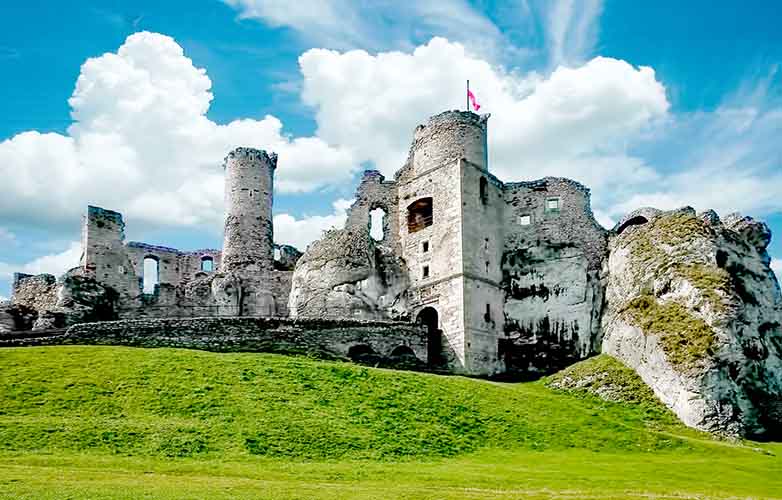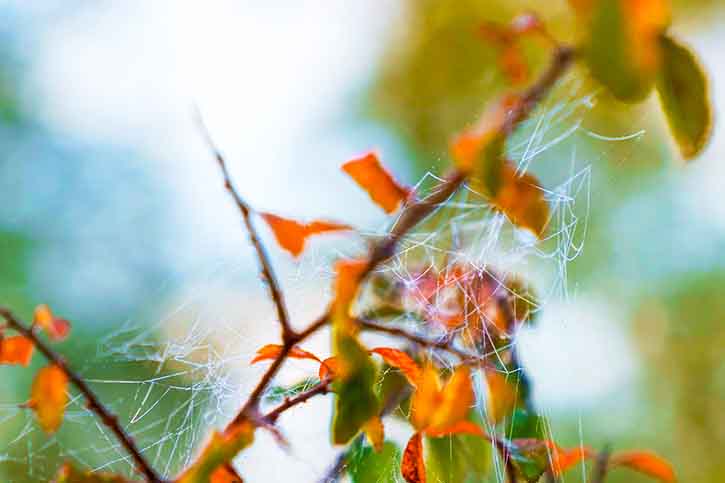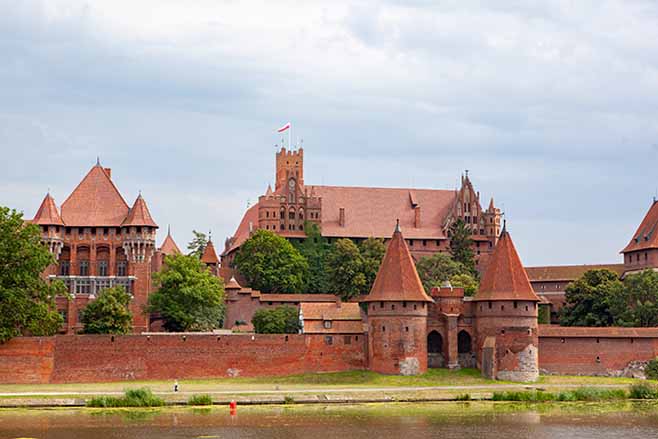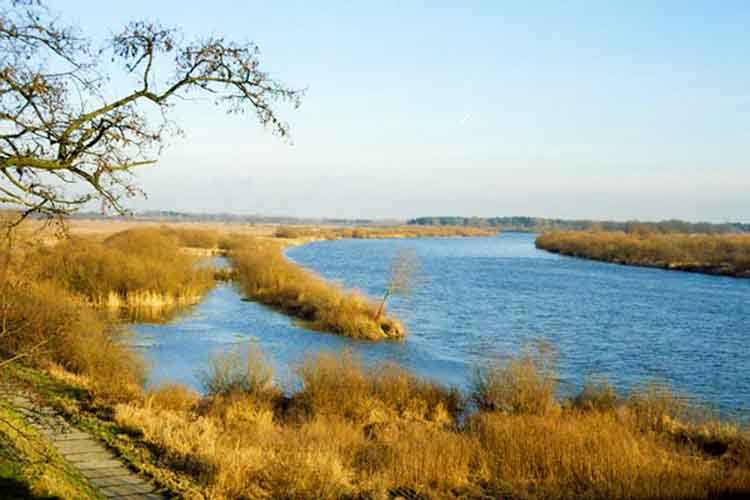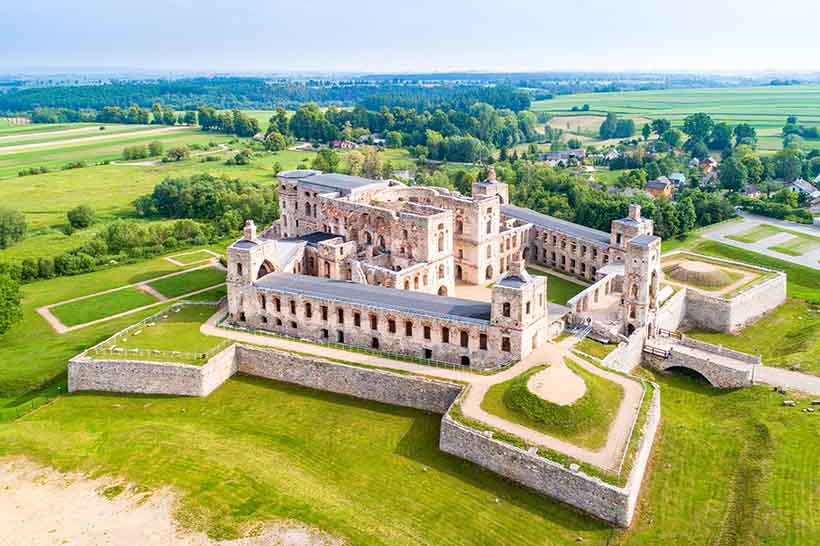Being in the Tatra Mountains and not seeing Morskie Oko (Eye of the Sea)? Everyone knows this largest mountain lake in Poland. Although getting there requires a several-kilometer hike or a ride in the recently much-criticized horse-drawn carriages, there's probably no one who wouldn't want to see its vibrant colors and the breathtaking panorama of the High Tatras.
Located in the Rybi Potok Valley at an altitude of 1,350 meters above sea level, and over 50 meters deep, it can be circumnavigated along a nearly 2.5-kilometer trail. It is fed by water from two streams flowing down from the Czarnostawieński and Mnichowy Mountains. The Mieguszowieckie Peaks, especially the majestic Mnich and Rysy, provide a unique backdrop.
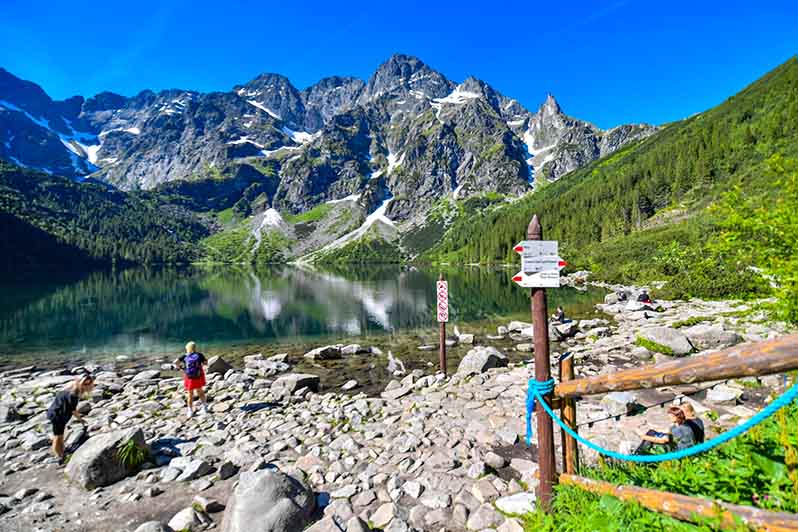
Morskie Oko (Source: DlaPolonii.pl)
The name itself isn't particularly fanciful; German settlers from Spisz called all mountain reservoirs "sea eyes." Highlanders used the names Biały Staw (White Pond) or Rybie Jezioro (Fish Lake) because of the natural stocking of fish. Such names were still in use in the 17th century. Although at that time only treasure hunters and metal hunters ventured near the vast mountain lake, news of its existence was passed down as a curiosity, as it was home to fish.
The first records of Morskie Oko date back to 1575. In 1637, by the will of King Władysław IV, Władysław Nowobilski received the right to use the pastures around the lake. In 1824, these properties, along with the Rybiego Potok Valley, were purchased from the Austrian authorities by Emanuel Homolacs, and was later acquired by Władysław Zamoyski, a social activist, philanthropist, and founder of the "Sokół" Gymnastic Society in Kraków. In 1933, the lake and its surrounding area were nationalized.
Although the lake is a legacy of the Ice Age, the story of its formation is full of fairy tales. Most of them assume that mountain lakes are bottomless and connect to a vast ocean somewhere deep in the earth.
This motif appears in the legend of a sailor who lost a casket of valuables during a great storm in the Adriatic, only to find it in a lake nestled in the middle of high mountains. A cauldron of robber ducats, guarded by the King of the Golden Serpents, is also said to lie in wait in Morskie Oko. It is also said that, thanks to an underground connection to the sea, Baltic fishermen were supposed to find the bust of Emperor Franz Joseph thrown from Rysy.
Podhale's maritime connection with the Baltic Sea is evidenced by highlander hats adorned with real seashells. However, Morskie Oko is certainly not saltwater, as its waters freeze in winter, and its fish population includes freshwater trout. Interestingly, the trout from the Tatra Mountains, nicknamed the King of Morskie Oko, differs from those found elsewhere: it has white fins and a larger head.
Located near Lake Morskie Oko, the mountain shelter is the oldest in the Tatra Mountains. The dedication of the first one, built in 1874, was a major social event, with even Helena Modrzejewska and Adam Asnyk attending. Unfortunately, the building was destroyed by fire in 1898. The shelter we see today was opened in 1908, and its opening was graced by Władysław Reymont and Leopold Staff.
The shelter at Morskie Oko is named after Stanisław Staszic, who is considered the first to explore this mountain lake. In 1805, he lacked specialized equipment, and it's difficult to imagine he had a boat, so he measured the depth from the shore by throwing a lead ball on a rope to the bottom. He recorded that the ball reached its deepest point at 583 feet, or almost 29 meters. We now know that the lake is over 50 meters deep at its deepest point.
The first tourist trail to Morskie Oko led from Bukowina. At the initiative of the Tatra Society, founded in 1873, construction began on a road from Zakopane through Jaszczurówka to Morskie Oko. It was completed in 1902. As late as the 1880s, 78 granite steps were built down to the lake itself, making it easier for tourists to reach its shores.
During the summer season, several thousand tourists flock to Morskie Oko on any clear day. As recently as the 1980s, a bus service operated to Włosienica, near the lake. After a major landslide, road traffic was suspended and remains suspended to this day.
The eight-kilometer distance from Palenica Białczańska can be covered on foot or by horse-drawn carriage. Horse-drawn carriages are heavily criticized, however, and environmentalists' arguments about the inhumane treatment of overloaded horses continue to be defeated by local tradition. In June, a decision was made to lighten the load on horse-drawn carriages, and testing of an electric bus has also begun.
Translation from Polish by Andrew Woźniewicz.







